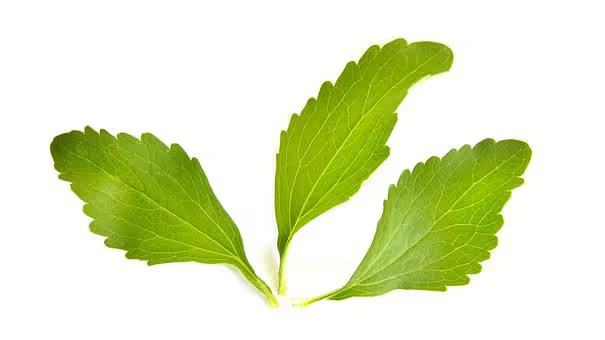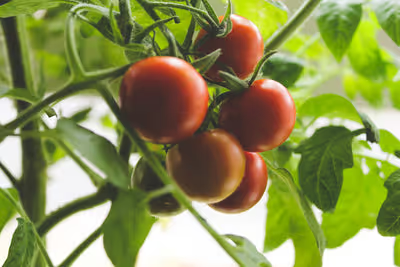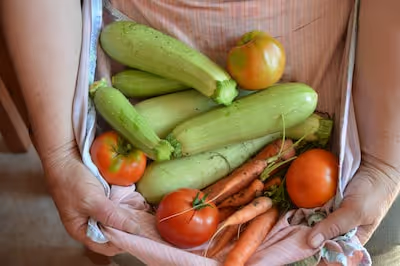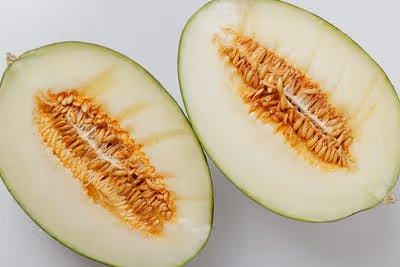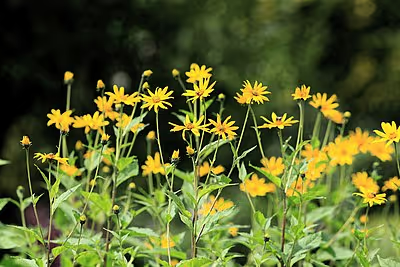Growing Anise: A Gardener's Guide to Fragrant Harvests
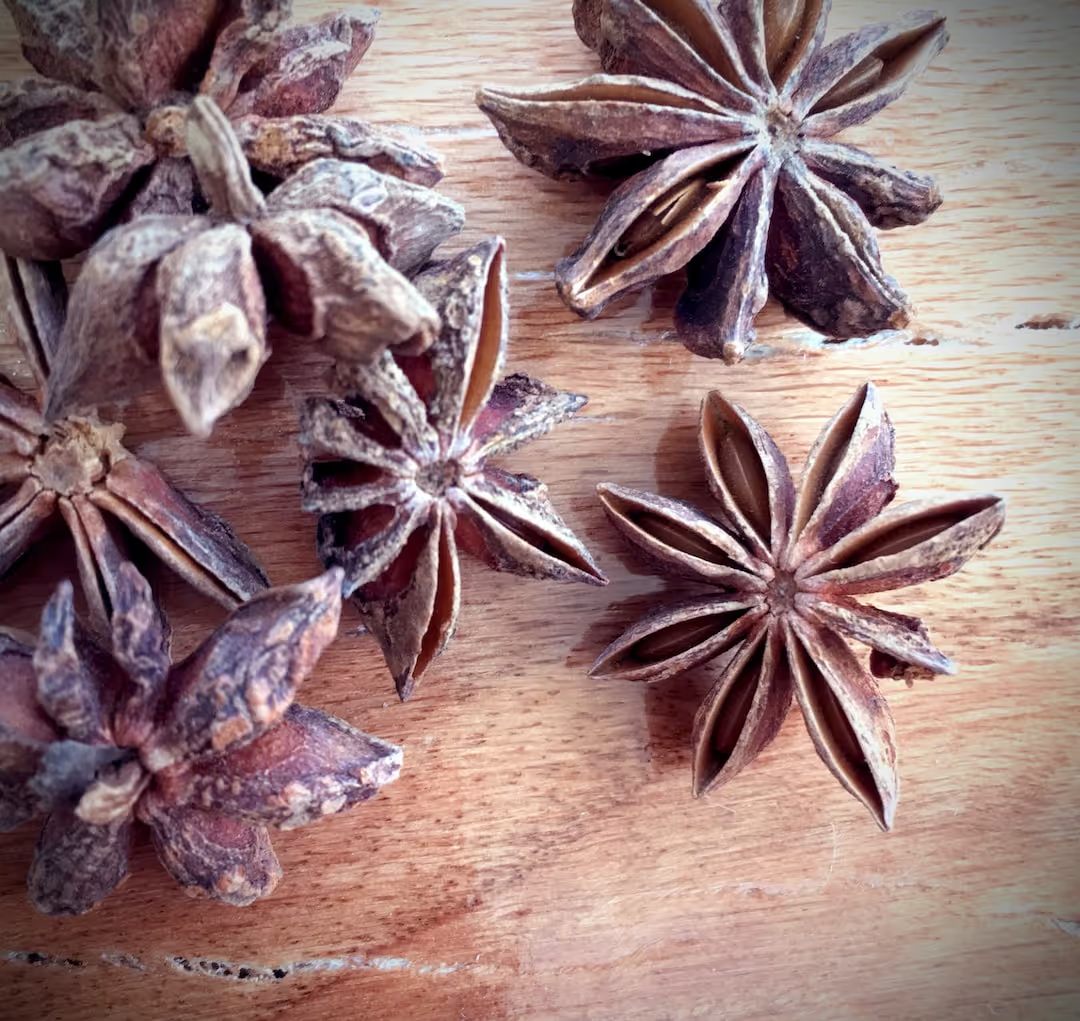
Growing Anise
Growing anise kicks off easily once spring frost clears and soil hits a steady 60°F (15°C). Growing anise means sowing seeds directly outdoors, under full sun, in fertile, well-drained dirt—no fancy greenhouse required. Growing anise delivers delicate licorice-scented leaves and sweet aromatic seeds perfect for herbal teas, cooking, or homemade infusions; read on to bring this spicy Mediterranean herb to life in your own garden.
Cheatsheet: Quick Guide to Anise Herb Mastery
🌱 Site & Soil
- Full sun, sheltered from wind
- Loose, well-drained soil (pH 6.0–7.0)
- No transplanting: sow directly
🌡️ Sowing & Timing
- Sow after frost, soil 60°F/16°C+
- Space seeds 1/2" (1.3cm) deep, 2" (5cm) apart
- Thin to 8" (20cm) between plants
- Germination: 7–14 days
💧 Water & Nutrition
- Keep soil just moist
- No soggy roots
- Light compost at planting
- Avoid nitrogen-rich fertilizer
🌾 Harvest & Yield
- Harvest seeds after umbels turn brown
- Cut seedheads, dry upside down in paper bags
- Estimated yield: 150–300g (5–10oz) seeds/plant
🦋 Pollinators & Pests
- Attracts bees, predatory wasps
- Repels aphids naturally
- Rarely attacked by pests
🍃 Health & Self-Sufficiency
- Digestive benefits, breath-freshening
- Use leaves, seeds for teas, baking, infusions
🧰 Tools and Products You'll Need
- Trowel
- Watering can
- Organic anise seeds
- Compost
- Paper bags (for seed drying)
- Gloves (harvest)
📝 Steps
- Prepare bed: Loosen, enrich soil, clear weeds.
- Sow seeds: Plant after last frost, cover lightly.
- Thin seedlings: Leave strongest, 8"/20cm apart.
- Water: Keep moist, avoid overwatering.
- Harvest seedheads when brown, dry in bags.
- Store seeds: Keep in airtight containers.
-
Growing Anise: Site, Soil, and Timing
I grow anise (Pimpinella anisum) where sun hits for 6 to 8 hours and wind does not bully the stems. The soil that wins is loose, well drained, and slightly alkaline to neutral at pH 6.0 to 7.5.
Plant once frost danger has passed and soil reaches 60 to 70 F or 16 to 21 C. In my cooler plot, I wait for the first warm week rather than the calendar.
Seed Starting and Direct Sowing
Anise carries a deep taproot, so I direct sow whenever I can. If I must start early, I use deep biodegradable cells and transplant before roots circle the pot.
Soak seed 12 to 24 hours, then sow 0.25 inch or 6 mm deep. Germination takes 10 to 21 days, and patience pays more than extra water.
Spacing, Water, and Feeding
I thin to 6 to 8 inches or 15 to 20 cm between plants, with 18 to 24 inches or 45 to 60 cm between rows. Tight spacing stunts umbels and drops seed set.
Keep moisture steady at about 1 inch or 25 mm per week. I feed lightly with compost tea early, then switch to low nitrogen and higher potassium to support seed and oil quality.
Containers and Small Spaces
Use a pot at least 12 inches or 30 cm deep. A gritty mix with 20 to 30 percent sharp sand keeps roots from sulking.
One plant per 10 to 12 inch or 25 to 30 cm pot gives better airflow and cleaner umbels. I stake early with a slim bamboo to keep stems upright.
Flowering, Pollinators, and Companions
Anise throws lacy umbels that call in hoverflies, parasitic wasps, and lacewings. I interplant with coriander and calendula to build a living pest patrol.
Skip pairing right beside fennel, which can hog space and attention. Give anise its own sun strip and it performs.
Troubleshooting: Pests, Disease, Off-Flavors
Aphids and leafminers show up first on soft growth. I knock them back with a firm water spray at dawn and let the beneficials mop up the rest.
Powdery mildew creeps in under crowding and drought stress. Wider spacing, morning watering, and a milk spray at 10 percent milk to water clears leaves fast in my beds.
Waterlogging brings root rot and a muddy taste in seed tea. Raise the bed and add grit if your soil stays wet after rain.
Harvesting Leaves, Umbels, and Seed
I pinch young leaves at 6 weeks for salads and fish. For seed, I wait until 60 to 70 percent of the umbels turn tan and the seeds firm up.
Clip heads into paper bags and hang in a warm, dry room at 75 to 86 F or 24 to 30 C. A week later I shake, winnow, and grin at the perfume in the air.
Drying, Cleaning, and Storage
Dry seed until it snaps clean between your fingers. Store whole in airtight glass in a cool cupboard, and grind only what you need.
Good seed keeps flavor for 1 to 2 years. I date jars and rotate like I do my spice rack for cooking.
Varieties, Seed Buying, and What to Look For
Named cultivars are limited, so I shop by descriptors: early maturing, high oil content, and upright habit. Reputable seed houses list test germination over 80 percent and the current lot year.
Ask vendors for origin and oil content if they have it. I have seen real differences in aroma between Mediterranean and Central Asian lots.
Growing Anise Indoors and Under Cover
An unheated tunnel gives me a 2 to 3 week head start. I sow two successions three weeks apart to stagger flowering and stretch the seed window.
Use insect netting during peak aphid flights, then uncover for pollination. Vent early to keep humidity low and mildew away.
Soil Health That Anise Loves
I prep with an inch of compost and a dusting of rock phosphate if soil tests low. Too much nitrogen gives tall plants with thin flavor.
Mulch lightly with straw once stems reach 6 inches or 15 cm. Thick mulch on seedlings delays warming and slows growth.
Safety Notes and Taste Quality
Anethole drives the classic licorice note, and heat and light strip it fast. Keep harvests shaded and dry them quick.
If you have allergies to Apiaceae like celery or carrot, sample a tiny amount first. For medicinal doses, I check current guidance from a licensed clinician or pharmacist.
Yield and Kitchen Math
Home plots often give 10 to 20 grams of clean seed per plant under good sun. That is enough for several baking rounds, a batch of sausage, and a winter of tea.
Succession sowing doubles what I bottle without crowding the bed. I keep records of sow dates, rain weeks, and harvest weight to dial in the next season.
Comparisons and Clever Alternatives
- Anise, Pimpinella anisum: Annual, sweet licorice, delicate umbels, direct sow, 110 to 130 days to seed.
- Star anise, Illicium verum: Evergreen tree, woody pods, subtropical, container culture only in cold climates, unrelated botanical family.
- Anise hyssop, Agastache foeniculum: Perennial mint, honeyed licorice-mint note, easy pollinator magnet, different flavor profile.
- Fennel, Foeniculum vulgare: Bulbs and seed, stronger camphor edge, can self sow hard, needs space.
I grow anise for clean sweetness, then blend tiny amounts of fennel for chew and star anise for bass notes. The trio in a syrup turns poached pears into a quiet little riot.
Commercial Curiosity: Tools and Supplies Worth Buying
- Soil thermometer for 60 to 70 F or 16 to 21 C sow temps.
- Deep cell trays or soil blocks, 2 to 3 inches or 5 to 7.5 cm, for gentle transplants.
- Fine mesh harvest bags and a collapsible drying rack.
- Low nitrogen organic fertilizer with extra potassium, used pre-bloom.
- Glass spice jars with gasket lids for storage.
These basics pay for themselves after one clean, fragrant harvest. Cheap gear that bends or leaks steals more flavor than any pest I fight.
Climate Notes by Zone
Zones 5 to 6 need the sunniest, best drained slot and fast spring sowing. Zones 7 to 9 can sow in late spring and again in midsummer for a fall seed set.
Short summers below 120 frost free days benefit from a low tunnel and early start in deep cells. Hot climates need afternoon shade cloth at 20 to 30 percent during heat waves over 95 F or 35 C.
My Field Notes
First year I crammed anise against the fence and got lace for foliage and no seed. Second year I spaced wide, fed light, and clipped a quart jar of seeds that perfumed the pantry.
On windy sites I run a twine corral around the patch at 10 and 18 inches or 25 and 45 cm. It keeps the umbels upright without bruising.
Quick Calendar
- Preseason: soil test, compost, and tool check.
- Late spring: direct sow after frost, or start deep cells 2 weeks prior.
- Early summer: thin, stake, and mulch light.
- Midsummer: watch for aphids, switch to low nitrogen feed.
- Late summer: bag umbels as they tan, dry, clean, and jar.
I write the dates on a wooden stake in the bed. The stick never forgets.
Data Points and Reliable Voices
“Anethole composes roughly 80 to 90 percent of anise essential oil,” Purdue NewCROP Anise profile, J.E. Simon et al.
“Direct sow due to the deep taproot and sensitivity to root disturbance,” RHS Herb Guide, Pimpinella anisum.
“Commercial seed yields commonly range from 0.6 to 1.2 t/ha,” FAO crop summaries for anise-producing regions.
FAOSTAT reports multi-million tonne production for the anise-badian-fennel-coriander group worldwide, with India as a leading producer.
Flavor Handling and Kitchen Wins
Toast whole seeds lightly until they sing, then crush. Heat wakes the perfume without cooking it off.
For liqueurs like anisette or pastis style syrups, I steep at 140 F or 60 C for 20 minutes. Higher temps mute the top notes I work so hard to grow.
Frequently Asked Questions About Growing Anise
What soil conditions favor healthy anise growth?
Anise plants thrive best in well-draining, fertile soil with a slightly acidic to neutral pH (6.0–7.0). To improve soil fertility, blend in compost or aged organic matter before sowing seeds.
How much sunlight do anise plants require?
Anise flourishes with exposure to full sun, meaning at least six hours of direct sunlight every day. Choose a garden spot open to sunlight throughout most of the day for vigorous development.
How often should anise be watered?
Consistent moisture is key, although anise plants prefer not to remain waterlogged. Water once weekly, ensuring the top inch (2.5 cm) of soil remains moist but not saturated. Increase watering slightly during periods of intense heat or drought.
When is the ideal time to plant anise seeds?
Anise plants should be sown directly into the garden in the spring months after the last frost date has passed and soil temperatures reach approximately 60°F (15°C). Warmer soil supports reliable germination.
How much space should be given between anise plants?
Allow approximately 12–18 inches (30–45 cm) between individual anise plants. Adequate spacing ensures optimal airflow, prevents disease, and supports healthy root development.
When and how do I harvest anise seeds?
Anise seeds mature roughly 120 days after planting. Harvest seed heads when they transition from green to a gray-brown hue and before they fully open, usually in late summer or early autumn. Clip entire seed heads, place them in a paper bag, and hang upside down in a dry, ventilated area to complete drying. Once seeds loosen easily, remove them from seed heads and store them in airtight containers.
Can anise plants grow successfully in containers?
Yes, anise plants thrive in containers as long as pots are sufficiently large and have good drainage. Select containers at least 12 inches (30 cm) deep and wide, using quality potting soil. Position the containers in locations receiving ample sunlight and maintain consistent watering.
What companion plants benefit anise?
Anise grows harmoniously with plants like coriander, beans, and radishes, as it attracts beneficial insects and improves overall garden health. Avoid planting alongside carrots or basil, which can negatively affect its growth.
Growing Anise rewards you with more than just a pretty face in the garden—it’s a patch of spice, medicine, and old-world aroma. Give this Mediterranean native sun and well-drained soil, and you’ll get feathery foliage and those signature licorice-scented seeds. Start from seed, thin ruthlessly, and keep the weeds at bay. Harvest when the umbels brown and the seeds rattle—then dry, store, and savor. Pair your anise patch with other aromatic herbs like lemon balm or pineapple sage for a garden that smells like a spice bazaar. In the end, patience and a little attention pay off. You’ll have a stash of seeds that spice your kitchen and soothe your senses, year after year.
The Prepper's Guide: Anise for Self-Sufficient Living
Medicinal Benefits & Home Remedies
- Digestive Aid: Chew raw anise seeds after meals to relieve indigestion, bloating, and gas.
- Respiratory Relief: Brew anise tea (1 tsp crushed seeds per 1 cup/240 ml boiling water) to ease coughs, congestion, and sore throat.
- Sleep Support: Infuse 2 tsp dried anise into warm milk for relaxing bedtime drink.
- Antimicrobial Properties: Use diluted anise seed infusion externally on minor cuts or scrapes to reduce infection risk.
Long-Term Storage & Preservation
- Drying Seeds: Harvest mature seed heads, dry upside-down in cool, airy place for 1–2 weeks; store airtight, away from sunlight, viable up to 3 years.
- Anise Extract: Steep crushed seeds in vodka (40% alcohol minimum) at 1:5 ratio for 4–6 weeks, strain thoroughly; shelf-stable indefinitely.
Bartering & Exchange Value
- Anise seeds historically valued as trade commodity for medicinal and culinary purposes.
- Easily transportable, lightweight, shelf-stable barter good for community exchange.
Attracting Beneficial Insects
- Anise flowers attract predatory insects (lacewings, ladybugs) that combat damaging garden pests naturally.
- Plant strategically near vegetables to reduce reliance on chemical pest management solutions.
Emergency Nutrition
- Anise seeds deliver essential minerals—iron, calcium, magnesium—and dietary fiber for nutritional support in limited-food scenarios.
- Sprouted anise seeds offer fresh, nutrient-dense microgreens within 5–7 days.
Find out which plants will thrive in your garden!
Answer a few fun questions and get custom plant recommendations perfect for your space. Let’s grow something amazing together!

start your season
